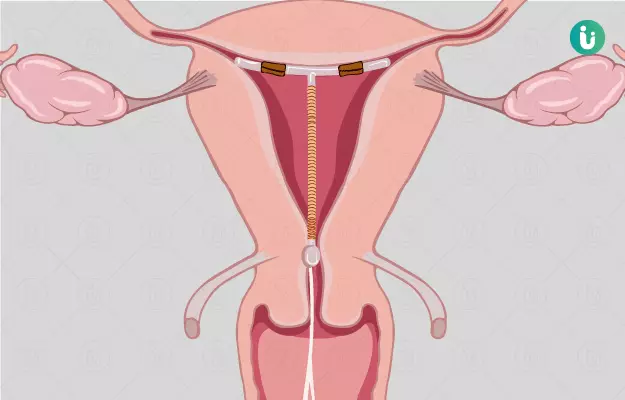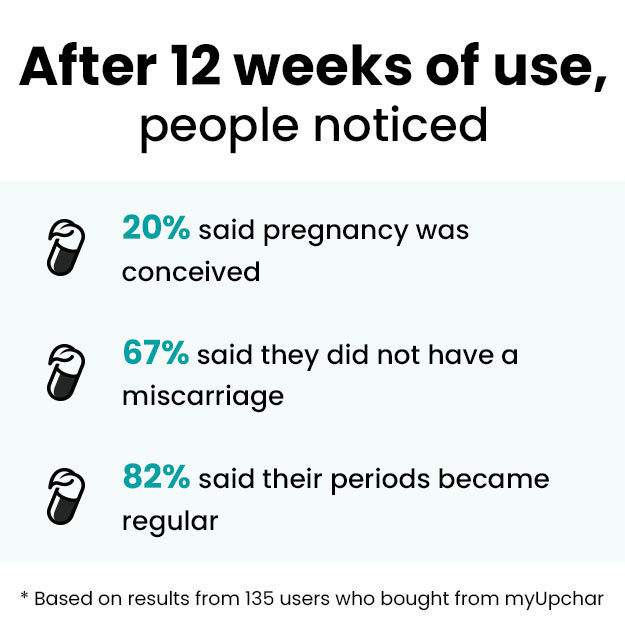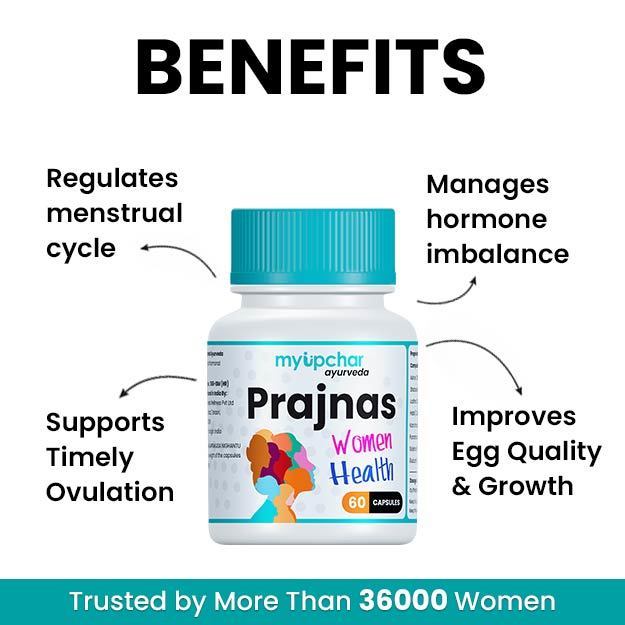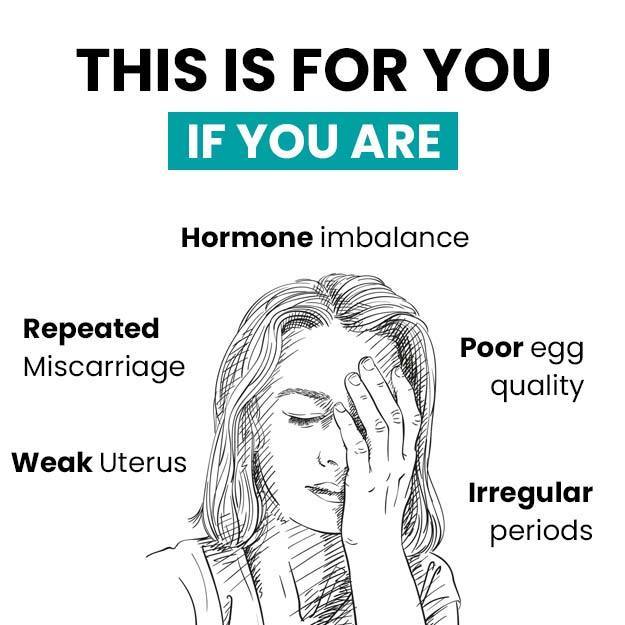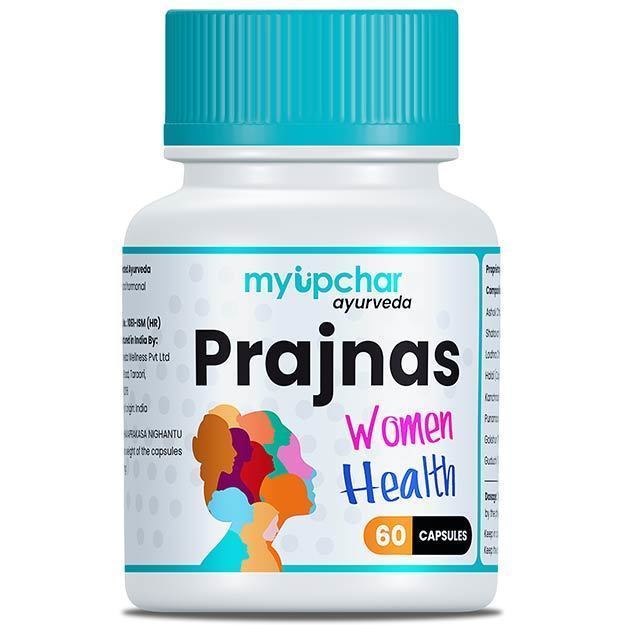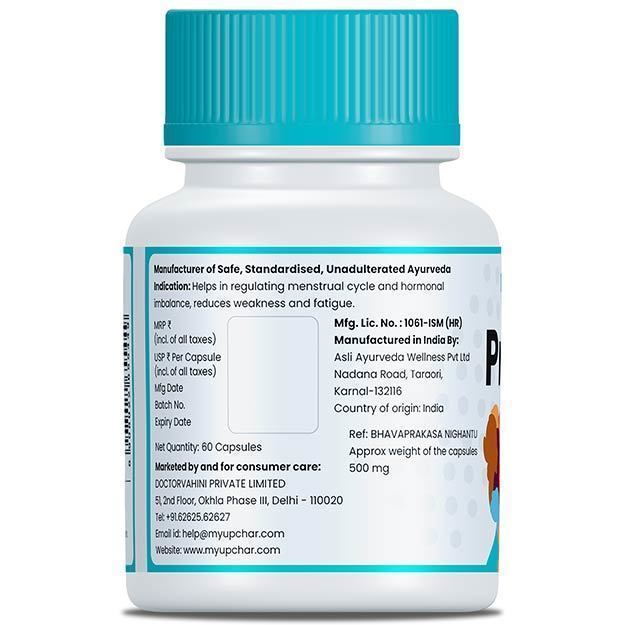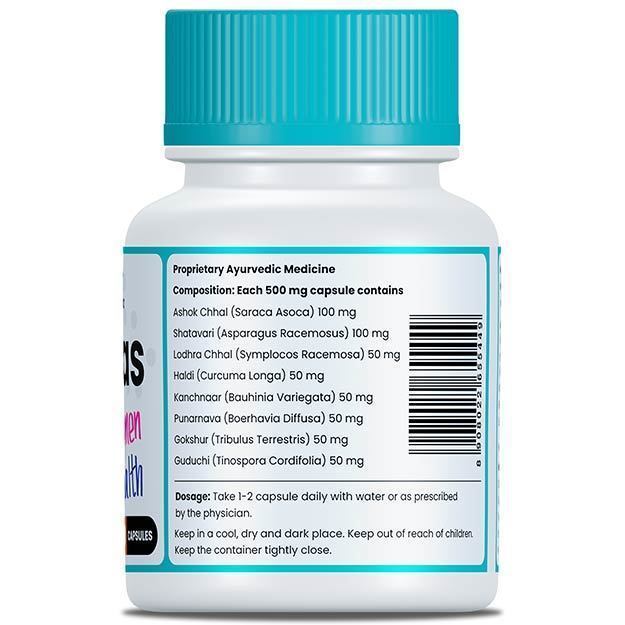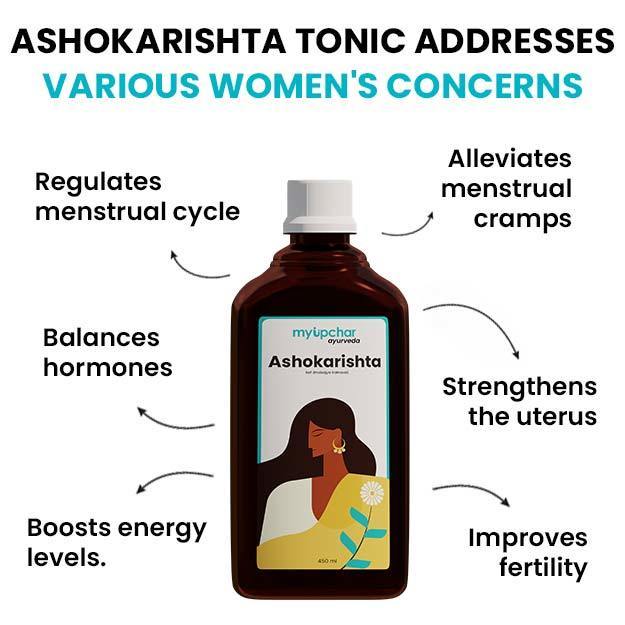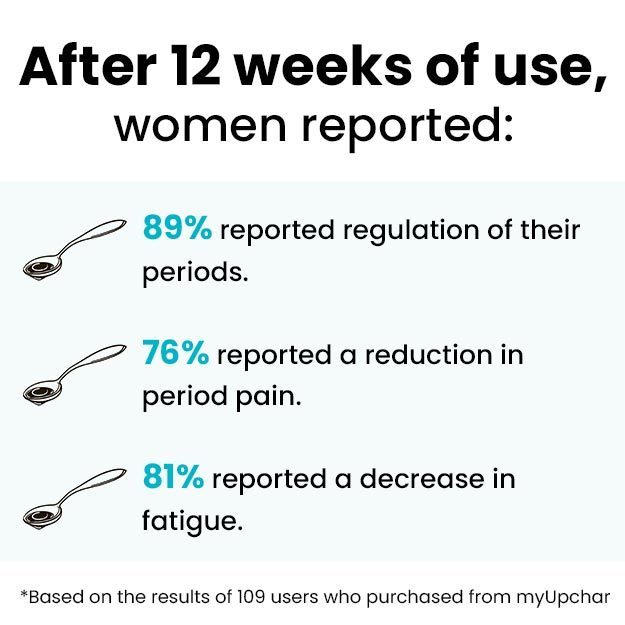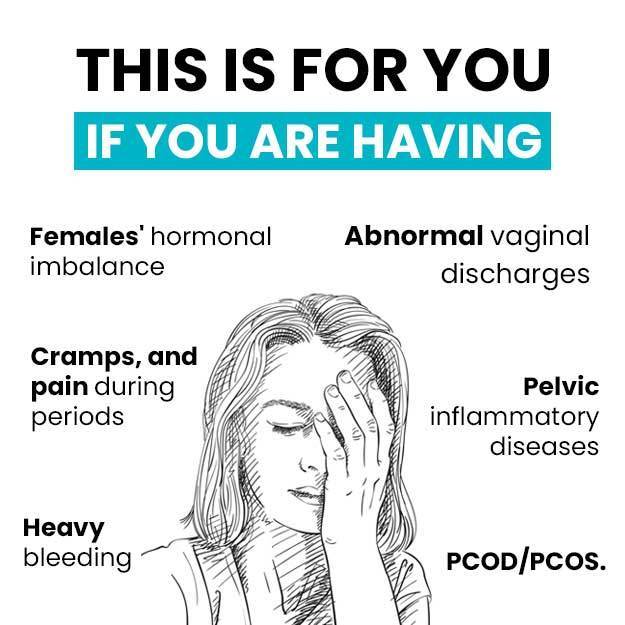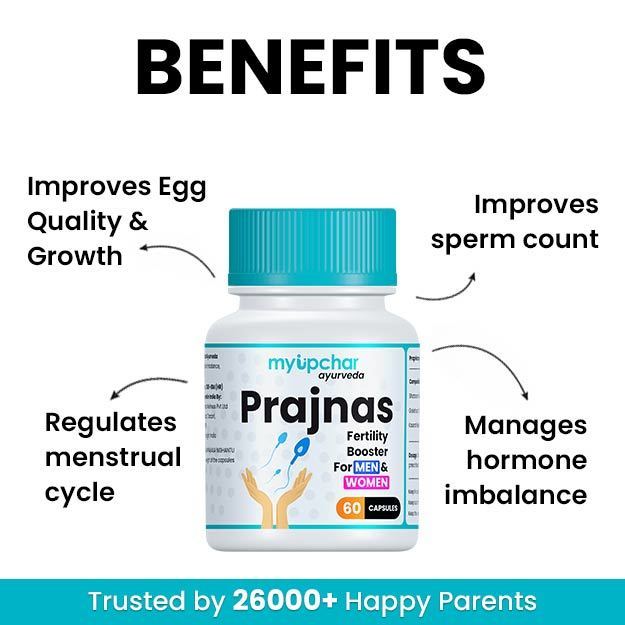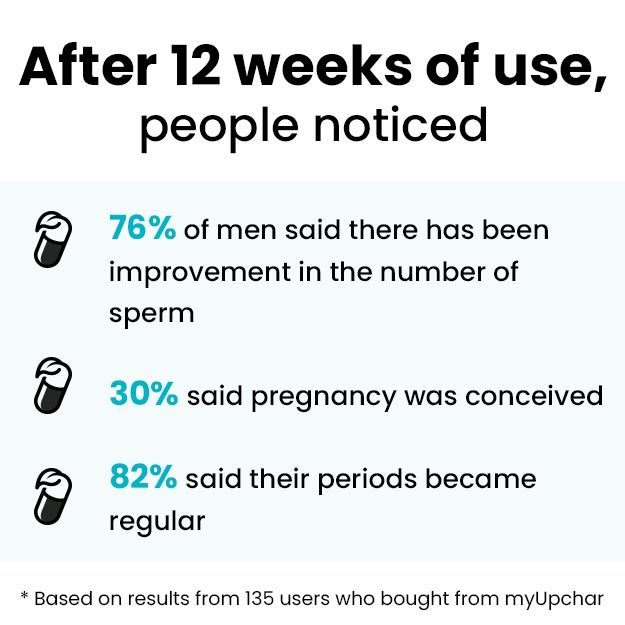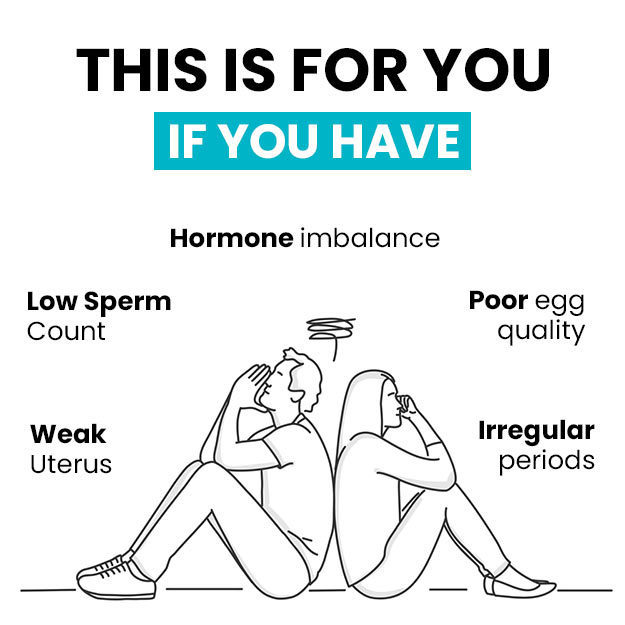Hey everyone! Ever feel like navigating the world of contraception is like trying to decode a secret language? So many options, so many questions! Today, we're going to shine a spotlight on a little wonder called the copper-T, or the copper IUD. This tiny, T-shaped device hangs out inside your uterus and is a super effective, hormone-free way to prevent pregnancy for years. Intrigued? Awesome! We will dive deep into what it is, how it works, tackle some common worries, and explore all the ins and outs. Think of this as your friendly guide to understanding the copper-T – no complicated jargon, just straightforward info to help you feel empowered and in the know!
- What is Copper T?
- How Does Copper T Work?
- Is Copper-T 100% safe?
- Is using Copper-T painful?
- Can my partner feel my Copper-T?
- Is inserting Copper-T painful?
- Do I need to shave for an IUD?
- Methods to insert Copper-T:
- Benefits of Copper-T:
- How successful is Copper-T?
- Can you still finger with an IUD?
- Do I need condoms with an IUD?
- What to avoid after getting an IUD?
- Can UDI break inside?
- Can an IUD break the hymen?
- Can Copper-T cause infertility?
- Does your body go back to normal after an IUD?
- Can I be active after IUD insertion?
- Does Copper-T cause weight gain?
- Where does period blood go when you have an IUD?
- Does an IUD stop the period?
- Is your first period after an IUD painful?
- What are the symptoms of an expired IUD?
- Is removing Copper-T painful?
- How to remove Copper-T?
- How to remove Copper-T at home?
- Side effects of Copper-T:
- What are the risks of an IUD?
- Which is better: the pill or an IUD?
- At what age do you stop using an IUD?
- What happens if Copper-T is not removed?
- Summary:
What is Copper T?
Copper T is used to give freedom to women from unwanted pregnancy. Copper T is also included in contraceptive devices. This contraceptive option is mainly said to be useful for women who have already become mothers. Copper T is a small device made of copper and plastic. This device is inserted in the uterus of women. With the help of which women are not able to conceive. But whenever women feel the need to conceive, they can easily remove the copper T and conceive.
(Read more -Emergency Contraceptive Pills)
How Does Copper T Work?
When Copper T is properly inserted into the uterus, it starts working. The copper wrapped around this T-shaped device affects the uterus, due to which you are unable to conceive. The copper of this device, when mixed with other fluids of the cervix and uterus, increases the amount of copper in it. Due to the high amount of copper, this fluid acts as a spermicide. Due to which the sperm reaching the uterus are destroyed after coming in contact with it. Due to the destruction of sperm, the egg formed under ovulation in women is not fertilized, and due to this, the woman is not able to get pregnant.
-
Effectiveness of Copper T - Copper T is considered very useful in contraceptive methods. According to experts, it is up to 99 percent effective.
-
Duration of effect - After applying Copper T, you will be free from pregnancy for 5 to 10 years. Its period depends on the quality of Copper-T. After removing it, you can easily get pregnant again. By inserting Copper-T in the first 5 days of menstruation, you cannot get pregnant. Copper T starts working from the first week of its insertion, and it remains effective for the maximum period of Copper T.
Is Copper-T 100% safe?
This question comes to mind of many women. Some women choose some other option of contraception when they do not get the answer to this question, while some women ask their doctor about this. In response to this question that comes in the mind of women while using Copper T, experts say that this technique of avoiding pregnancy is quite effective. Its T shape is easily located in the uterus. Apart from this, Copper T does not allow the sperm to easily fertilize the egg formed in the uterus of women. Just as it starts working as a contraceptive after applying it, in the same way, after removing it, you are easily able to conceive. Copper T is made to prevent pregnancy for 10 years, but many Copper-Ts can work only for 5 years. The ability to prevent pregnancy also depends on the quality of Copper T. Apart from this, if you want to get pregnant soon, then you can remove it and conceive at any time.
There are no hormones of any kind present in Copper T, that is why it does not affect the menstrual cycle of women. Whereas many other hormonal options of birth control make menstruation irregular.
Study Around the Safety of Copper-T
This review, “Long-term safety, efficacy, and patient acceptability of the intrauterine Copper T-380A contraceptive device” by Bliss Kaneshiro and Tod Aeby examines the long-term safety, effectiveness, and acceptability of the Copper T-380A IUD as a contraceptive method. The review highlights that the Copper T-380A stands out as a highly effective contraceptive option, characterized by a remarkably low failure rate. The study underscores its safety profile, noting the minimal risk of adverse events associated with its use. A significant portion of women find the Copper T-380A to be an ideal contraceptive solution due to its long-lasting nature, its non-interference with sexual activity, its lack of interaction with other medications, its easy reversibility, and the absence of hormone-related side effects. .
However, it's important to acknowledge that the review also points out that some women may discontinue its use due to the potential for longer, heavier menstrual periods and increased menstrual pain. Data indicates that approximately 50% of women continue to use the Copper T-380A for up to 5 years. In conclusion, the Copper T-380A emerges as a safe and highly effective contraceptive method that enjoys considerable acceptance among women, although the impact on menstrual bleeding and pain can influence its continued use.
https://pmc.ncbi.nlm.nih.gov/articles/PMC2971735/
Is using Copper-T painful?
It's normal to wonder if using a copper-T is going to hurt. The honest answer is, it's a bit of a mixed bag, and everyone's experience can be a little different.
Whether using a Copper-T is painful is a common concern, and the experience can vary from person to person. Here's a breakdown in simple terms:
During Insertion:
-
Some Discomfort is Normal: Most women experience some discomfort during the insertion process. This is because the healthcare provider needs to gently pass the Copper-T through the cervix (the narrow opening to the uterus).
-
What it Feels Like: The sensation is often described as similar to strong period cramps or a pinching feeling. It usually lasts only a few minutes while the IUD is being placed.
-
Pain Levels Vary: The intensity of the discomfort can differ greatly. Some women might only feel mild cramping, while others might experience more noticeable pain. Factors like whether you've had a vaginal birth before can influence this, as the cervix might be more accustomed to stretching. Anxiety levels can also play a role in how pain is perceived.
-
What Doctors Can Do: Healthcare providers are aware of this potential discomfort and can take steps to minimize it. This might include:
-
Pain medication: Recommending over-the-counter pain relievers like ibuprofen or naproxen before the procedure.
-
Local anesthesia: In some cases, a local anesthetic can be used to numb the cervix.
-
Slow and gentle insertion: A skilled provider will perform the insertion carefully and at a pace that is best for the patient.
-
Breathing techniques and relaxation: They might also guide you through breathing exercises to help you relax during the procedure.
-
After Insertion:
-
Cramping is Common: It's normal to experience cramping and sometimes light spotting or bleeding for a few hours or even a few days after the Copper-T is inserted. This is your uterus adjusting to the presence of the IUD.
-
Pain Relief: Over-the-counter pain relievers like ibuprofen or acetaminophen can usually help manage these post-insertion cramps. Using a heating pad on your lower abdomen can also provide comfort.
-
Usually Subsides: The pain and discomfort typically lessen within a day or two.
-
When to Seek Help: If you experience severe pain, heavy bleeding, fever, or any other concerning symptoms after the insertion, it's important to contact your healthcare provider.
Long-Term Use:
-
Generally Not Painful: Once your body has adjusted to the Copper-T, you usually shouldn't feel it during your daily activities.
Possible Heavier Periods and Cramps: Some women may experience heavier and more painful periods with the Copper-T, especially in the first few months. This often improves over time. If the heavier periods and cramps are severe and interfere with your life, it's important to discuss this with your doctor.
Can my partner feel my Copper-T?
Okay, let's address that little worry that might be popping into your head – "Will my partner feel this thing during intimacy?" The short and sweet answer is, generally, nope!
Think about where the copper-T sets up shop – it's inside your uterus, which is tucked away quite a bit further in than, say, where a tampon sits. During intercourse, things are happening more externally. Now, the IUD does have little strings attached to it – kind of like tiny fishing lines – and these hang down a little bit into the top part of your vagina. These strings are there so a healthcare provider can easily remove the IUD later on.
Initially, right after insertion, these strings might feel a little stiff or noticeable. But over time, they tend to soften up and curl around. Your doctor or nurse will also trim them to a comfortable length. So, in most cases, neither you nor your partner should feel a thing during your intimate moments. It's designed to be a silent, out-of-sight, out-of-mind kind of contraception!
(Read more - Infertility: symptoms, causes)
Is inserting Copper-T painful?
Getting a Copper-T put in can feel like strong period cramps for a few minutes while the doctor is doing it. Some people feel it more than others. Afterward, you might have cramps and maybe a little bleeding for a day or two as your body gets used to it. You can usually take regular pain medicine to help with that.
Once it's in, you usually don't feel it anymore. Some people might get heavier or more painful periods with it, especially at first, but that often gets better over time. So, yes, it can be a bit painful when it's being put in, but it doesn't last long, and it's usually not painful after that. If you're worried about the pain, talk to your doctor – they can help make it easier for you.
Do I need to shave for an IUD?
Okay, let's clear up a super-easy one! Are you wondering if you need to book a pre-IUD insertion grooming session? The answer is a resounding nope! You can skip the shaving, waxing, or any other form of hair removal down there before your IUD appointment.
Think about it – the insertion process is all about what's happening inside your body. The healthcare provider will be working internally, focusing on your cervix and uterus. Your external hair situation has absolutely no bearing on how the IUD is inserted or how it will work. So, save yourself the extra step and any potential irritation. You can just show up as you are, comfortable and ready! It's one less thing to worry about, right?
(Read more - Diet during the first month of pregnancy)
Methods to insert Copper-T:
So, you're curious about how this little copper-T gets inside, right? Well, it's a medical procedure, so it's definitely a job for the trained pros – your gynecologist or a nurse practitioner is your go-to person here. They've done this many times and know exactly what they're doing.
Think of the process in a few easy steps:
First up is a pelvic exam. This is probably something you're familiar with. Your provider will gently check things out to get a feel for your uterus – its size and where it's sitting. It's like them getting a lay of the land before they set up camp.
Next comes the speculum insertion. If you've ever had a Pap smear, you know the drill. A speculum is a smooth, hinged instrument that's gently placed into your vagina. It helps to widen the vaginal canal just a little bit so your provider can see your cervix – that's the doorway to your uterus.
Then, they might use a uterine sound. Don't let the name sound scary! It's just a thin, flexible instrument that they gently insert into your uterus to measure its depth. This is like them measuring the room to make sure the IUD will fit perfectly and be in the right spot.
Now for the main event: the IUD insertion. The copper-T itself is tucked inside a thin, sterile tube called an inserter. This tube is gently guided through your cervix and into your uterus. Once it's in the right position, the IUD is released from the inserter. Remember that "T" shape? Well, the arms of the "T" actually fold up inside the inserter and then spring open once they're inside your uterus, kind of like a little anchor to keep it in place.
Finally, there is the string trimming. The IUD has those little strings attached, and your provider will trim them to a comfortable length. These strings will stay inside your vagina, but they shouldn't bother you or your partner. They're mainly there so the IUD can be easily removed later on.
The whole shebang is usually pretty quick, often just a matter of minutes. You might feel some pressure or cramping during it, but it's generally over before you know it!
Benefits of Copper-T:
Okay, let's talk about why so many people are fans of the copper-T. It's got some pretty awesome advantages! Think of these as the gold stars on its report card:
First off, it's a real superstar when it comes to being effective. We're talking top-of-the-class level here! It's one of the most reliable reversible ways to prevent pregnancy out there. You can pretty much count on it doing its job.
Then there's the fact that it's hormone-free. This is a huge plus for folks who either prefer to avoid hormones or can't take them for medical reasons. You get reliable birth control without any of the hormonal ups and downs that can sometimes come with other methods. It lets your body do its natural thing.
It's also in it for the long haul – it's long-lasting! Depending on the specific type, a copper-T can protect you from pregnancy for up to a whopping 10 to 12 years. That's like setting it and (almost) forgetting it! Imagine not having to think about birth control every day or every month for a decade – pretty liberating, right?
But even though it sticks around for a while, it's also reversible. When you decide you're ready to start a family or just want to switch methods, a healthcare provider can easily remove it, and your fertility returns quickly. It's not a forever decision!
And speaking of not having to think about it daily, there's no daily hassle! No pills to remember to take at the same time every day. Once it's in, you're covered. It just quietly does its thing in the background.
Here's a cool bonus you might not know about: the copper-T can even step in as emergency contraception! If it's inserted within a certain timeframe after unprotected sex, it can prevent a pregnancy from happening. That's a pretty handy trick up its sleeve!
So, all in all, the copper-T offers a fantastic package of effectiveness, convenience, and hormone-free protection. It's like the reliable, low-maintenance friend in the birth control world!
(Read more - How To Take Care During Pregnancy)
How successful is Copper-T?
The copper-T IUD is a superstar when it comes to preventing pregnancy, boasting an effectiveness rate of over 99%. Think of it this way: if 100 people use the copper-T for a year, generally fewer than one of them will become pregnant. That's a very small number, making it one of the most reliable forms of birth control available.
Amazingly, such a small device can be so effective, right? It works without hormones, primarily by making the uterus and fallopian tubes a not-so-friendly environment for sperm. The copper in the IUD releases ions that are toxic to sperm, hindering their movement and ability to fertilize an egg.
So, yes, "incredibly successful" is a perfect way to describe how well the copper-T works.
Can you still finger with an IUD?
Absolutely! Having the IUD is placed inside your uterus, which is quite a bit higher up inside your body, past your cervix. When you (or a partner) are using fingers for pleasure, you're interacting with the external genital areas and the vagina. These areas are separate from where the IUD is located.
Sometimes, the strings of the IUD, which hang down through the cervix into the vagina, might be felt if fingers go quite deep. However, they are usually soft and shouldn't cause any discomfort or get in the way of enjoying yourself.
So, rest assured, your IUD won't interfere with your ability to explore and enjoy manual stimulation! It's all happening in different areas of your amazing body.
Do I need condoms with an IUD?
While the copper-T is a superhero at preventing pregnancy, it doesn't have any powers against sexually transmitted infections (STIs). Think of it this way: the IUD's job is to prevent sperm from fertilizing an egg. Condoms, on the other hand, act as a barrier that can help prevent the exchange of bodily fluids during sexual contact, which is how STIs are often spread.
So, if you are in a monogamous relationship where both you and your partner have been tested for STIs and you're both clear, then you don't need to use condoms for STI protection. The IUD will take care of pregnancy prevention.
However, if you have new or multiple partners, or if you're not sure about your partner's STI status, using condoms every time you have sex is crucial. This will significantly reduce the risk of transmitting or contracting STIs.
Therefore, the answer is: for pregnancy prevention, the copper-T is excellent on its own. But for STI protection in non-monogamous relationships, condoms are still a necessary part of the picture. Using both (the IUD and condoms) gives you the best of both worlds – highly effective pregnancy prevention and STI protection.
(Read more - Condoms: types, how to use)
What to avoid after getting an IUD?
For the first day or two after your IUD insertion, it's usually advised to avoid:
- Heavy lifting or strenuous exercise: Think of your uterus as having just gone through a little procedure. Just like you wouldn't want to immediately run a marathon after any other medical procedure, it's best to give your body a break. Strenuous activity can potentially increase cramping or discomfort as your uterus adjusts to the IUD. Taking it easy for a day or two helps things settle down more comfortably.
- Inserting anything into your vagina (tampons, menstrual cups): After the insertion, there's a very small risk of infection as your body adjusts. Tampons and menstrual cups are inserted into the vagina and could potentially introduce bacteria. Using pads instead during your period for the first cycle or as long as your healthcare provider recommends helps minimize this risk. It allows the area to heal without any potential interference.
- Baths, hot tubs, and swimming pools: Similar to avoiding vaginal insertions, the concern with baths, hot tubs, and swimming pools in the initial period is the potential for introducing bacteria into the vagina, which could increase the risk of infection. Showers are generally considered a safer option during this time. Once your healthcare provider gives you the all-clear, you can usually resume these activities.
Your healthcare provider might give you other specific instructions, so be sure to follow their advice.
(Read more -Family Planning: Definition, methods, types)
Can UDI break inside?
It's good to be aware of potential issues, even if they are uncommon. Think of an IUD as a small, flexible device designed to sit comfortably inside your uterus for several years. While it's made to be durable, there's a very, very small possibility of it breaking. This isn't like snapping in half, but more like a part of it might become damaged or detached.
Displacement is a more common concern, though still not frequent. This means the IUD might move from its intended position within the uterus. If this happens, it might not be as effective at preventing pregnancy, and in rare cases, it could potentially poke through the uterine wall (perforation).
That's why it's important to be aware of certain signs and symptoms that could indicate a problem:
-
Sudden or severe pain: While some cramping is normal after insertion and sometimes during periods, a sudden and intense pain that feels different could be a sign of an issue.
-
Changes in bleeding: A significant increase in bleeding or unusual bleeding patterns that are different from your normal period could also be a red flag.
-
Feeling more of the IUD strings: Your healthcare provider will usually trim the IUD strings after insertion, and you might be able to feel them slightly. However, if you suddenly feel more of the string than usual, or if you can feel the hard part of the IUD, it could mean it has moved.
-
Your partner can feel the IUD during sex: This could also indicate displacement.
It's really important to emphasize that these issues are rare. IUDs are generally very safe and effective. However, being aware of these potential signs empowers you to seek help if something doesn't feel right.
If you ever have any concerns about your IUD, whether it's about pain, bleeding, or the strings, the best thing to do is to contact your healthcare provider. They can examine the IUD's position and ensure everything is as it should be. It's always better to get any worries checked out for peace of mind!
(Read more - Benefits Of Watermelon For Pregnancy)
Can an IUD break the hymen?
The hymen is a membrane that can partially cover the opening of the vagina. It can be stretched or torn through various activities, including tampon use, exercise, and intercourse. Now, when an IUD is inserted, a healthcare provider gently passes the IUD through the vagina and then through the cervix (the opening to the uterus). Because the hymen is located at the opening of the vagina, the insertion process could potentially cause some minor stretching or changes to it, especially in individuals who haven't had anything inserted into their vagina before.
Can Copper-T cause infertility?
No, the copper-T does not cause infertility. It's a reversible method of contraception, meaning that once it's removed, your ability to get pregnant should return to normal. Many people conceive shortly after having their IUD removed.
Does your body go back to normal after an IUD?
Once the copper-T is removed, your body should return to its normal cycles and fertility. Because it's hormone-free, it doesn't typically cause long-lasting changes to your natural hormonal balance.
Can I be active after IUD insertion?
That's a great point! Generally, you can get back to your regular activities, including exercise, pretty soon after your IUD insertion. However, the key thing is to listen to your own body. Think of it like getting a little internal adjustment. While the IUD is settling into place, your uterus might feel a bit sensitive or crampy. Taking it easy for the first 24 hours or so can help minimize discomfort.
It's usually recommended to avoid strenuous activities, like heavy lifting or intense workouts, for that initial period. This is just to prevent any extra strain or potential for increased cramping. After a day or two, most people feel comfortable enough to gradually return to their normal routine. If you do experience any pain or discomfort when you're being active, it's a good idea to ease up and give your body a bit more time to adjust. So, the short answer is yes, you can be active, but it's wise to start gently and pay attention to how you're feeling. If you have any concerns, don't hesitate to check in with your healthcare provider – they can give you personalized advice based on your situation.
Does Copper-T cause weight gain?
Unlike some hormonal birth control methods, the copper-T is not associated with weight gain. Since it doesn't release hormones, it doesn't typically affect your metabolism or appetite in a way that would lead to weight changes.
Where does period blood go when you have an IUD?
When you have a copper-T, your menstrual cycle continues as usual. The IUD sits inside your uterus, and the period blood still flows out through your cervix and vagina, just like it would without an IUD.
Does an IUD stop the period?
The copper-T is a non-hormonal IUD, so it doesn't usually stop your period. Some people might experience heavier or longer periods, or more intense cramping, especially in the first few months after insertion. However, these changes often subside over time. There are hormonal IUDs that can lighten or even stop periods for some individuals.
Is your first period after an IUD painful?
Your first period after getting a copper-T might be a bit different than usual. Some people find it to be heavier, longer, or more crampy. This is often just your body adjusting to the presence of the IUD. However, if you experience severe pain or very heavy bleeding, it's important to contact your healthcare provider to rule out any complications.
What are the symptoms of an expired IUD?
Copper IUDs have an expiration date, usually around 10-12 years after insertion. Once it expires, it may not be as effective at preventing pregnancy. You might not experience any noticeable symptoms when your IUD expires, which is why it's crucial to remember when it was inserted and to schedule its removal and replacement if desired.
Is removing Copper-T painful?
Removing a copper-T is generally a much quicker and less uncomfortable procedure than insertion. Your healthcare provider will usually use a pair of forceps to gently grasp the strings of the IUD and pull it out. You might feel a slight tug or a brief cramp, but it's usually over very quickly.
How to remove Copper-T?
There is a simple method of removing Copper T. You can remove it with the help of your doctor. Within a month of removing Copper-T, your body becomes capable of conceiving 30 percent. There is a thread on the lower end of Copper-T, which, when pulled outwards, the Copper-T comes out easily. The doctor takes it out with a forcep. Many women feel pain while removing the Copper-T. In this condition, bleeding can also occur. But this bleeding is not like menstruation. This type of bleeding is common immediately after removing the Copper T. In many cases, this bleeding gets cured on its own. If the maximum period of inserting a Copper T has been completed, then you can remove it and get another Copper T inserted at the same time.
(Read more - How To Take Care During Pregnancy)
How to remove Copper-T at home?
As mentioned above, it is not recommended or safe to try and remove a copper-T at home. Attempting to do so could lead to pain, bleeding, infection, or even injury. Always rely on a healthcare professional for IUD removal.
Side effects of Copper-T:
While generally safe, the copper-T can have some potential side effects, especially in the first few months after insertion:
- Heavier and longer periods
- Increased menstrual cramps
- Spotting between periods
- Backaches
These side effects often lessen or go away over time as your body adjusts to the IUD.
Study Around the Side Effects of Copper-T
A study published in May 2009 by David Hubacher, Pai-Lien Chen, and Sola Park investigated the evolution of side effects experienced by first-time copper intrauterine device (IUD) users over one year. The research aimed to address the limited information available on how these side effects change with continued IUD use, a crucial aspect for both women considering this contraceptive method and those already using it. The data for this secondary analysis was drawn from a larger placebo-controlled randomized trial conducted between 2002 and 2003, which originally examined the impact of prophylactic ibuprofen on IUD continuation rates among 1,947 participants.
The study's key findings revealed distinct patterns in different types of side effects. During menstruation, women reported a decrease in both bleeding and pain over the 52 weeks of follow-up. However, during the intervals between periods, while overall complaints of spotting and pain remained relatively stable, the number of days on which these issues occurred increased. Furthermore, serious side effects that necessitated a clinic visit or IUD removal showed varying trends depending on the specific problem encountered.
To gather this information, the researchers utilized follow-up visits scheduled at 6, 13, 26, and 52 weeks post-IUD insertion. During these visits, participants were asked to compare their menstrual bleeding and pain levels to their experiences before using the IUD. Additionally, the women maintained a menstrual diary for the initial six months after insertion, meticulously recording relevant events. The analysis of this collected data, using mixed effects regression modeling, corroborated the observed trends of decreasing menstrual pain and blood loss alongside an increase in the frequency of intermenstrual spotting and pain days. Serious complications exhibited varied temporal patterns, with pain showing a decrease and intermenstrual spotting an increase over time.
Based on these findings, the study authors recommended that clinicians proactively discuss the potential for side effects to diminish over time with women who are either considering a copper IUD or are current users experiencing issues. They also suggested the use of non-steroidal anti-inflammatory drugs as a management strategy for persistent bleeding and pain. The implications of this research lie in its potential to enhance counseling for women regarding IUD use, thereby influencing method acceptability and continuation rates by providing a clearer understanding of the likely trajectory of side effects. In conclusion, the study demonstrated that while some side effects associated with the copper IUD, such as menstrual pain and bleeding, tend to improve with time, others, like intermenstrual spotting, may not. This nuanced understanding is vital for effective patient education and management.
What are the risks of an IUD?
Serious complications with copper IUDs are rare, but like any medical procedure, there are some potential risks:
-
Expulsion: Think of the IUD as needing to stay snugly inside your uterus to do its job. Expulsion is when it partially or completely comes out of the uterus. This is most likely to happen in the first year after it's put in, especially during your periods when the uterus contracts. Sometimes, you might feel it come out, but other times you might not notice. Regular checks of the IUD strings can help you ensure it's still in place. If it does come out, you're no longer protected from pregnancy.
-
Perforation: This is a very rare but serious risk. Perforation happens when the IUD goes through the wall of your uterus during the insertion process. Skilled healthcare providers take precautions to avoid this, but it can still happen in very few cases. If perforation occurs, the IUD usually needs to be removed surgically to prevent complications. Symptoms might include severe pain right after insertion, but sometimes it can be silent initially.
-
Pelvic Inflammatory Disease (PID): PID is an infection of the reproductive organs. There's a slightly increased risk of PID in the first few weeks after IUD insertion. This risk is generally linked to any pre-existing STIs that might have been present but not treated at the time of insertion. That's why it's often recommended to get tested for STIs before getting an IUD. After the initial few weeks, the risk of PID is generally not higher for IUD users than for people not using IUDs. Symptoms of PID can include pain in the lower abdomen, fever, unusual vaginal discharge, and pain during intercourse.
-
Ectopic Pregnancy: Ectopic pregnancy is when a fertilized egg implants outside the uterus, usually in the fallopian tube. While pregnancy is rare with an IUD, if it does happen, there's a slightly higher chance that it could be ectopic. This is because the IUD is very effective at preventing pregnancy within the uterus, but might not prevent all ectopic pregnancies. Ectopic pregnancies are serious and require medical treatment. Symptoms can include abdominal pain, vaginal bleeding, and dizziness.
It's so important that you mentioned contacting your healthcare provider if you experience any concerning symptoms. Being aware of these potential risks and knowing when to seek medical attention is key to managing your health while using an IUD. They can provide guidance, diagnosis, and treatment if any of these rare complications occur.
(Read more - Every Mother Should Know : Pregnancy Problems)
Which is better: the pill or an IUD?
There's no single "better" option when it comes to birth control; it depends on your individual needs, preferences, and medical history.
- The Pill: Offers hormonal regulation, can help with acne and lighter periods for some, but requires daily consistency.
- Copper IUD: Hormone-free, long-lasting, very effective, but can lead to heavier periods and cramping for some.
Talking to your healthcare provider is the best way to figure out which method is the right fit for you. They can discuss the pros and cons of each based on your specific situation.
At what age do you stop using an IUD?
There isn't a specific age to stop using an IUD. As long as you still need contraception and the IUD is within its lifespan, you can continue using it. However, as you approach menopause, your need for contraception will naturally decrease. Your healthcare provider can advise you on when it's appropriate to have your IUD removed based on your circumstances.
What happens if Copper-T is not removed?
It's important to have your copper-T removed by its expiration date. If left in for too long, it may become less effective at preventing pregnancy, and there's a potential risk of complications like infection or difficulty removing it later on. Make sure to keep track of your IUD's insertion date and schedule its removal or replacement as recommended by your doctor.
So, there you have it! A pretty comprehensive look at the copper-T. It's a fantastic option for many looking for long-acting, hormone-free birth control. Remember, the best way to know if it's right for you is to have an open and honest chat with your healthcare provider. They can answer any other questions you might have and help you make the best choice for your body and your lifestyle. Stay informed and take care!
Summary:
So, we've journeyed through the world of the copper-T, haven't we? We learned that this little copper-clad device is a fantastic, long-lasting, and hormone-free way to prevent pregnancy by creating an unwelcoming environment for sperm. While insertion might bring a little discomfort for some, and the first period might be a tad different, it's generally a safe and highly effective option. We cleared up myths about partners feeling it, the need for shaving (spoiler: nope!), and the importance of leaving removal to the pros. We also touched on potential (though rare) risks and side effects, and how it stacks up against the pill. Ultimately, the copper-T offers a great choice for those seeking reliable, reversible contraception without hormones. Remember, chatting with your healthcare provider is always the best step to figure out if the copper-T is the superhero your birth control routine needs!


